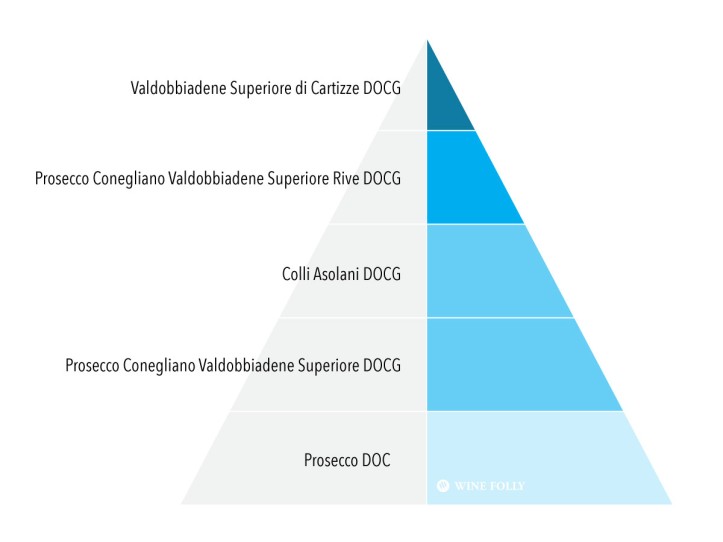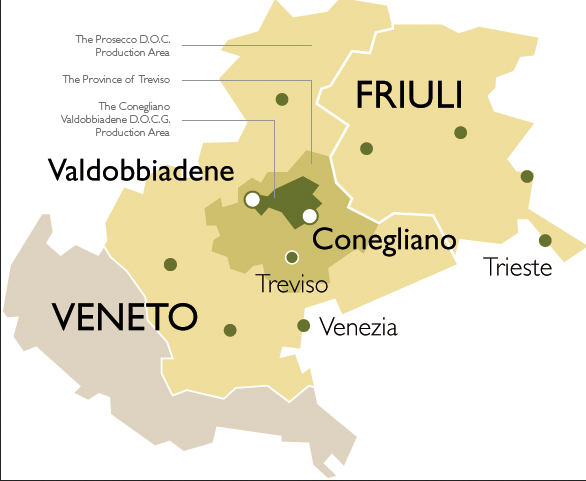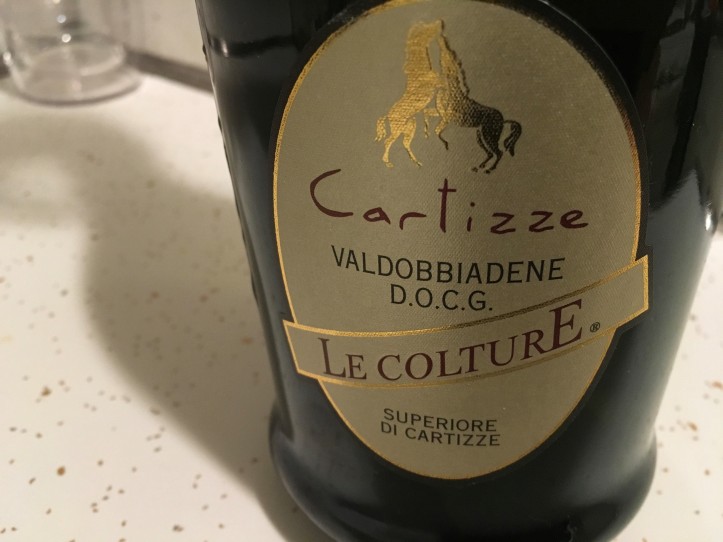Happy December! ‘Tis officially the season to be jolly and the bloggers of the Italian Food Wine & Travel group are up to the challenge. In fact, they’re raising the stakes: our motto this month is:
‘Tis the Season to Be Bubbly!
Saturday, December 1st at 11 am ET we’ll gather virtually via Twitter (where folks are always in high spirits) to discuss the delights of Italian sparkling wine. Our host is Martin Redmond of Enofylz Wine Blog fame, and he did a great job of explaining just how vast that subject is in his invitation post. Lest you think it’s all about Prosecco, take heed: not even Prosecco is a one-dimensional topic. Head on over to his website to learn more . . .
Here’s a preview of what the rest of the gang will be adding to the discussion:
- Lynn of Savor the Harvest suggests A Medley of Italian Sparkling Wines #ItalianFWT
- Jeff of foodwineclick want us to “Sparkle Your Dessert with Moscato d’Asti“
- Jen of Vino Travels~An Italian Wine Blog will be sharing Spaghetti with Clams and a Flight of Adami Prosecco
- Cam of Culinary Adventures with Camilla will be dishing up Italian Bubbles + Lasagna Bianca.
- Wendy of A Day In the Life on a Farm will be Celebrating Leftovers
- Kat of Bacchus Travel and Tours shows us Italian Sparklers to Light Up Your Holidays #ItalianFWT
- Gwendolyn of the Wine Predator serves up Bellavista! Shrimp Pasta with Italian Sparkling Wine from Franciacorta #ItalianFWT
- Nicole of Somm’s Table shares Classically Contratto: Beautiful Wines from Italy’s Oldest Sparkling Wine House
- Katarina of Grapevine Adventures offers A Superior Sparkling Christmas With Bele Casel
- Susannah at Avvinare shares Lambrusco for the Holidays
- Martin at ENOFYLZ Wine Blog, will be sharing A Distinctive Due of Italian Sparkling Wines #ItalianFWT.
As for me, I’m diving into the Conegliano-Valdobbiadene DOCG, a region celebrated for its high-quality Prosecco. The wines featured in this post were part of #winestudio, an online education program I participated in last year, and they were provided to me as samples. That said, the notes and opinions are all mine.
But first, a little background on one of the world’s favorite sparkling wines and its origins.

Prosecco DOC
The Prosecco DOC is Italy’s largest denominazione di origine controllata, comprising more than 34,000 acres. Maximum yields are high, and grapes may be grown in the Veneto or neighboring Friuli Venezia-Giulia. Most DOC Prosecco is simple, inexpensive, and easy to drink, but you won’t find much complexity.
Prosecco Conegliano Valdobbiadene Superiore DOCG
When you add a G (for garantita) to the denominazione, you take a step up in quality: grapes must be grown on the hillsides between the towns of Conegliano and Valdobbiadene, in the original Prosecco production zone. Comprising fewer than 15,000 acres in 15 communes, vineyard sites lie at higher altitude, with a southerly aspect, allowing grapes to ripen slowly and completely. Yields are lower than in the DOC, but still relatively high compared to other DOCG regions. Nevertheless, there are some producers who apply stricter production standards than those dictated by the regulations, making high-quality Prosecco that punches way above its weight.
All wines must be at least 85% Glera (although many make 100% varietal wines) and the balance can come from international varieties or local grapes.

Colli Asolani Prosecco DOCG
These vineyards lie in the hills just across the river from Conegliano Valdobbiadene and surround the city of Treviso. Production methods are in accordance with many of the same quality standards, with one major difference: maximum yields are much lower here (12 tons per hectare versus 13.5 tons in Conegliano Valdobbiadene.) Again, some producers observe stricter limits and offer wines of superior quality.

Prosecco Conegliano Valdobbiadene Superiore Rive DOCG
This category represents the region’s cru system, in which 43 communes (rive) have earned the right to append their village name to the label if they observe maximum yield limits of less than 13 tons per hectare. Because there are many microclimates and distinct soil types making up the production zone, it’s not surprising that some have been identified as exhibiting site-specific characteristics in their wines.
Let’s take a quick look at how the five geographic zones in Conegliano Valdobbiadene leave a unique signature on the wines:
Eastern Zone: made up of rolling hills, this area boasts soils rich in clay, and, and stones washed down during the formation of the Dolomite Mountains, 100 kms to the north. Wines from the eastern zone tend to have ripe fruit aromas and flavors.
Central-Eastern Zone: soils here are rich in iron oxide, giving them a reddish color. There are also pockets of clay and stone, resulting in complex wines with intense aromas of spice.
Central Zone: famous for its very steep slopes which were formed by the geologic upheaval of sea beds millions of years ago, the central zone soils are distinct from the others, made of sandstone, clay, and marl. Wines made here are noticeably floral and taste of white fruit.
Central-Western Zone: this landscape is dotted with steep, cone-shaped hills with shallow conglomerate soils with a high percentage of sandstone. Wines made here have a tangy acidity, citrus flavors, and floral aromas.
Western Zone: this area has the widest range of soil types and the oldest ones too. Most of the vineyards lie atop south-facing slopes of marl, sandstone, or limestone, depending on whether the plot sits on what was once an ancient sea bed or whether it dates back to the formation of the Dolomites. Some of the most complex Prosecco wines come from this region; they are known for a distinctly mineral flavor profile, with subtle fruit aromas and a unique herbal quality.
For more details on the geography of the region, visit www.prosecco.it.
Valdobbiadene Superiore di Cartizze DOCG
Comprising just 107 hectares in western Valdobbiadene, this DOCG produces some of the finest examples of Prosecco. Scattered among the steepest slopes in the towns of Santo Pietro di Barbara, Santo Stefano, and Saccol, vineyards are planted in the region’s most ancient soils. Grapes benefit from a long, slow ripening season, and are often harvested later than those grown elsewhere. The wines reflect the unique terroir, offering ripe fruit and zesty herb aromas as well as the trademark minerality.
Now for the Fun . . .
With the holidays practically upon us, I’ve been reminiscing about Christmases past, trying to decide what to do about Christmas Present. Since I’m not sure where we’ll be or with whom we’ll be celebrating, I figured I would share what I would like to be eating.
As with most things, this isn’t really about the food, per se; it’s more about the memories I have of special people, places, and things. For some reason I’m focused on side dishes at the moment: things that I love and that would make perfect accompaniments to whichever roast beast graces our table. And to up the holiday ante, I’ve matched each dish with a delicious Prosecco DOCG wine.
The Pairings

Masottina Conegliano Valdobbiadene Millesimato Prosecco DOCG Le Rive di Ogliano Extra Dry (11.5% abv; about $17 retail)
Here’s one of the rive wines, made from grapes grown on the sunny, steep slopes of Ogliano in the east of Conegliano. Alpine breezes and less rain than in other parts of the region ensure the grapes linger on the vine pest- and disease-free, ripening at a leisurely pace. Soils derive from the incursion of the Piave glacier, which left rich deposits of calcium and clay. Vineyards are tended manually, requiring roughly 900 man-hours per hectare each year. The Dal Bianco family has farmed this land since 1946 and remains committed to the local community and to forging and sustaining the unique identity of the wines from Ogliano.

100% Glera, this wine is just off-dry and it is oh-so pleasant! Lovely aromas of clementine, kumquat, and green pear mingle with subtle spice – think ginger and nutmeg. On the palate it is crisp, with high acidity and a long, tangy finish. You could pair this wine with mild cheese, salty charcuterie, or even a light dessert. I’ve chosen to sip it with a salad featuring ruby-red slices of blood orange, slivers of red onion, and a rustle of arugula dressed in a simple vinaigrette.


Le Colture Valdobbiadene Spumante Superiore di Cartizze DOCG (11% abv; about $30 retail)
The word cartizze comes from the local term for the straw mats on which just-harvested grape clusters are set to dry. This concentrates the flavors and sugars a bit, resulting in some residual sweetness in the wine; however, crisp acidity and a distinct mineral quality serve as a balance. The wine is lively, fresh, and crisp, with ripe fruit aromas and flavors. There’s also a nice, zesty herbal note that I find really appealing.
Le Colture is located in the small village of Santo Stefano and has grown grapes since the 1500s. Now run by Cesare Ruggeri and his family, Le Colture launched its foray into the sparkling wine segment in 1983. It now also makes semi-sparkling wines and still red wines.

As with the previous wine, you could match this one with many types of food. For my imagined holiday dinner, I’m serving this alongside roasted brussels sprouts with salami, feta, and herbs. This would also be nice with an herb-roasted turkey breast.

Malibràn Credamora Col Fondo Valdobbiadene Prosecco DOCG (11% abv; about $25 retail)
This is a special one! Most Prosecco wines are made via the Charmat method, in which the second fermentation – producing the bubbles – happens in a closed tank. The spent yeast cells (lees) are racked off before the wine is bottled, leaving it full of primary fruit aromas.
Wines made via the traditional method (as in Champagne) undergo the second fermentation in the bottle. The spent yeast cells stick around while the wine rests in the cellar before bottling, imparting aromas of brioche and dough, and adding a creamy texture to the wine. Prior to sale, the wine is disgorged, meaning that the spent lees are removed.
Well, col fondo wines go a bit further in that the lees are not removed from the bottle and the wine is not filtered before sale. Thus, they are usually decanted before drinking. Wines made in the col fondo style are earthy and creamy and are usually frizzante (semi-sparkling) rather than spumante (sparkling); most are dry.

Azienda Agricola Malibràn was founded by a trio of wine lovers: Gregorio, whom they call the Earth’s philosopher, Girolamo, whose passion for Prosecco knows no bounds; and Maurizio, who, according to his partners, was born to be a sparkling wine maker. With respect to their col fondo bottling, they describe it as “an aroma from the past” that is perfectly at home in the modern era. I like that definition, and I think it paints an accurate description of the wine.
In the glass, this wine gives off intriguing aromas of toasted nuts, baking bread, ripe apples and pears, and an earthy mushroom note. On the palate it is at once tingly and soft, a nice play between the acidity and yeasty, creamy texture. It’s going to make an appearance with my mother’s scalloped oysters – a dish I haven’t made in years but have a craving for all of a sudden. My sister makes it every Thanksgiving; this year I will make it for Christmas in honor of my mom, who passed away in March. But that means I have to find my old cookbook first: it’s at the bottom of a moving box that has yet to be unpacked. Wish me luck!

So, to come full-circle: I mentioned at the start that what we serve for the holiday is less important than who we’re enjoying it with. Creating a memory can happen just as easily around a casual table as it can at a fancy one laden with fine china and gourmet delights.
Whichever direction you’re headed with the holiday meal, enjoy the little moments that make you stop and smile. Trust me, they’re what will stick with you long after the food is gone.




I remember these wines from #winestudio. I also remember loving them all, but especially that Malibran Col Fondo. Wish I could find it here!
LikeLiked by 1 person
My eyes were opened to Prosecco in all its glory during that #winestudio session. So many options!
LikeLike
Those look fantastic. I do not believe I’ve ever had scalloped oysters. Intrigued!
LikeLiked by 1 person
Thanks! They were one of my mom’s favorite dishes.
LikeLike
[…] Lauren of the The Swirling Dervish gives us A Trio of Italian Sparkling Wines for Your Holiday Table #ItalianFWT […]
LikeLike
[…] Lauren of the The Swirling Dervish gives us A Trio of Italian Sparkling Wines for Your Holiday Table […]
LikeLike
Thanks for the nice tutorial. I knew Valdobbiadene, but not much beyond that.
LikeLiked by 1 person
Thanks Jeff. There’s a lot beneath the surface of Prosecco!
LikeLike
[…] Lauren of the The Swirling Dervish gives us A Trio of Italian Sparkling Wines for Your Holiday Table #ItalianFWT […]
LikeLike
[…] Lauren of the The Swirling Dervish gives us A Trio of Italian Sparkling Wines for Your Holiday Table #ItalianFWT […]
LikeLike
Between you and Martin we’re covered when it comes to an overview of Proseco, CV, etc, great info. I’m betting your brussels sprouts dish with the smokiness of salami would be nice with Italian sparklers like Col Fondo and others with a bit of yeast character. And I’m betting I’ll make that side over the holidays ;-D
LikeLiked by 1 person
That’s one of my take-aways from the chat: so many styles and options when it comes to Italian sparkling wine. And many I need to taste!
LikeLike
A wonderful rundown of the different categories. That pairing suggestion of the col fondo with the scalloped oysters sounds heavenly, and with beautiful memories to accompany it all!
LikeLiked by 1 person
Thanks Nicole! I’m looking forward to making that dish for the first time and I’m sure the wine will be a great match. Happy holidays!
LikeLike
Prosecco is wonderful. Ten years ago, instead of a traditional bachelor party, we started at an Italian bistro in the Chelsea section of NYC and then hit two more wine bars. When booking, I jokingly asked for a bucket of Prosecco from the Italian owner, who I knew through friends.Sure enough he had filled a large bucket (think garbage pail large) with ice and bottles of Prosecco! Needless to say, we had a wonderful time.
LikeLiked by 1 person
That sounds like my kind of party! Cheers to Prosecco!
LikeLike